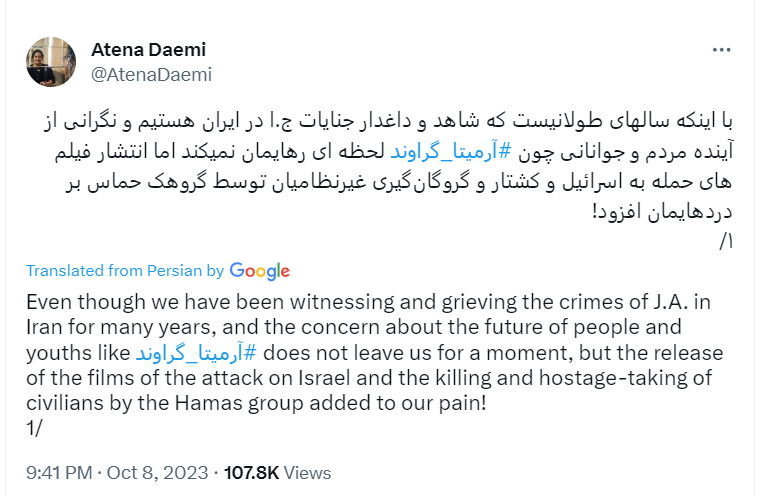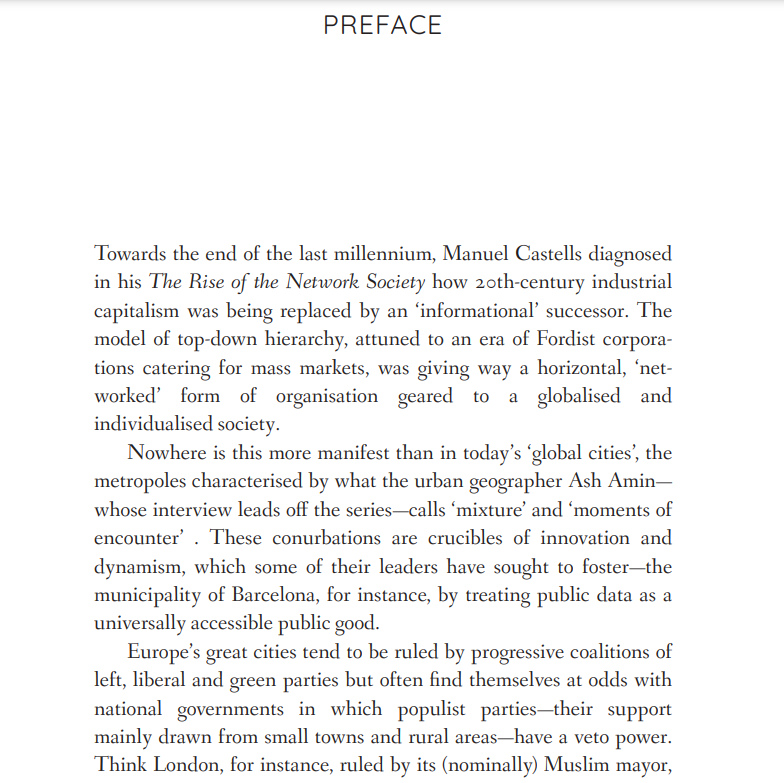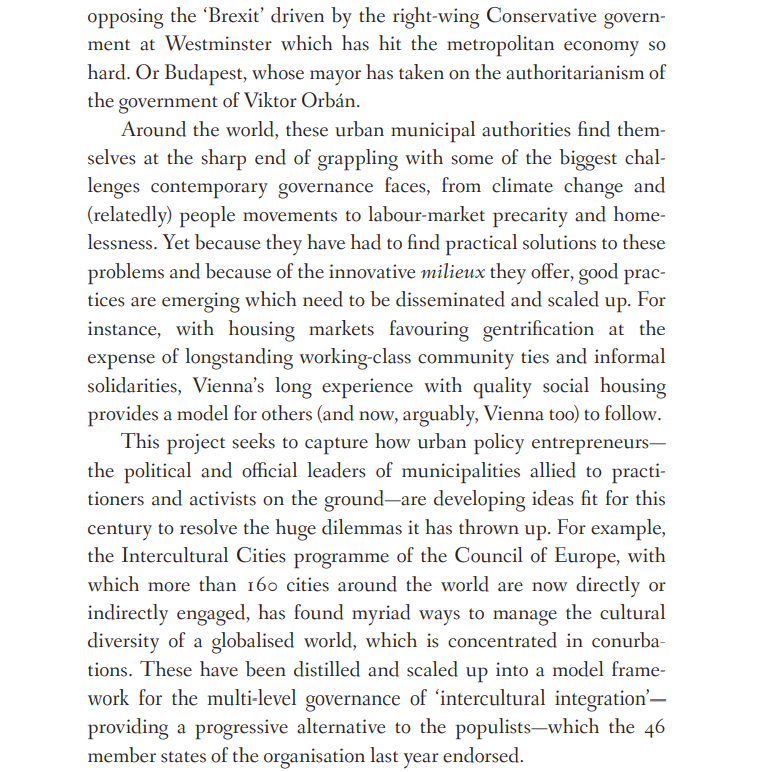Welcome to DU!
The truly grassroots left-of-center political community where regular people, not algorithms, drive the discussions and set the standards.
Join the community:
Create a free account
Support DU (and get rid of ads!):
Become a Star Member
Latest Breaking News
General Discussion
The DU Lounge
All Forums
Issue Forums
Culture Forums
Alliance Forums
Region Forums
Support Forums
Help & Search
Celerity
Celerity's Journal
Celerity's Journal
October 15, 2023
How did Israel not see the Hamas attack coming? - 60 Minutes Australia (from one hour ago)
October 15, 2023
HOMER, La. – A Claiborne Parish woman took her own life in front of the sheriff’s office this week following her release from jail, sources tell KTBS.
The woman, identified as Blanche Burcham, who is in her 70s, reportedly was arrested for a financial crimes offense. She was released by Sheriff Sam Dowies on her own recognizance, meaning she did not have to post bond.
Burcham, of Haynesville, then went outside and shot herself near her car in the parking lot of the Claiborne Parish Sheriff’s Office in Homer. A request to the sheriff’s office for information was not answered. Homer police were not notified even though it happened in the town.
“Notifying us would have been standard operating procedure since it happened inside the city limits so we could have investigated it,” Homer Police Chief Van McDaniel said.
snip

https://www.baileyfuneralhome.net/obituaries/Blanche-Betsy-Tinsley-Burcham?obId=29503629

76 year old Claiborne Parish woman dies by suicide in front of sheriff's office (shot herself)
https://www.ktbs.com/news/claiborne-parish-woman-dies-by-suicide-in-front-of-sheriffs-office/article_24738c4c-694f-11ee-a235-ef787ff18c97.htmlHOMER, La. – A Claiborne Parish woman took her own life in front of the sheriff’s office this week following her release from jail, sources tell KTBS.
The woman, identified as Blanche Burcham, who is in her 70s, reportedly was arrested for a financial crimes offense. She was released by Sheriff Sam Dowies on her own recognizance, meaning she did not have to post bond.
Burcham, of Haynesville, then went outside and shot herself near her car in the parking lot of the Claiborne Parish Sheriff’s Office in Homer. A request to the sheriff’s office for information was not answered. Homer police were not notified even though it happened in the town.
“Notifying us would have been standard operating procedure since it happened inside the city limits so we could have investigated it,” Homer Police Chief Van McDaniel said.
snip
https://www.baileyfuneralhome.net/obituaries/Blanche-Betsy-Tinsley-Burcham?obId=29503629

October 15, 2023
https://www.politico.com/news/2023/10/14/desantis-they-are-all-anti-semitic-00121587

Republican presidential candidate Ron DeSantis on Saturday said the U.S. should not accept Gaza refugees as conflict in the Middle East escalates. “If you look at how [people in Gaza] behave, not all of them are Hamas, but they are all anti-Semitic,” the Florida governor said at a campaign event in Iowa.
https://twitter.com/VeronicaStrac/status/1713221051390308732
Israel is expected to move forward with a ground invasion of northern Gaza in retaliation for Hamas’ attacks last weekend. Palestinians in Gaza have struggled to follow an evacuation order, which covers an area with over 1.1 million residents — about half of the territory’s population — and demands that they cram into the southern half of the 25-mile strip.
“We cannot accept people from Gaza into this country as refugees,” DeSantis told the audience. Instead, he said “the Arab states” should take them in. “You don’t fly people and import them into the United States of America,” he added.
DeSantis, a longtime supporter of Israel, called for a “swift and lethal response” following Hamas’ attack last week. The Florida governor signed an executive order Thursday directing the state to arrange charter flights for Americans out of Israel — in addition to those already ordered by the Biden administration.
snip
DeSantis: U.S. should not accept Gaza refugees
Instead, he said “the Arab states” should take them in.https://www.politico.com/news/2023/10/14/desantis-they-are-all-anti-semitic-00121587

Republican presidential candidate Ron DeSantis on Saturday said the U.S. should not accept Gaza refugees as conflict in the Middle East escalates. “If you look at how [people in Gaza] behave, not all of them are Hamas, but they are all anti-Semitic,” the Florida governor said at a campaign event in Iowa.
https://twitter.com/VeronicaStrac/status/1713221051390308732
Israel is expected to move forward with a ground invasion of northern Gaza in retaliation for Hamas’ attacks last weekend. Palestinians in Gaza have struggled to follow an evacuation order, which covers an area with over 1.1 million residents — about half of the territory’s population — and demands that they cram into the southern half of the 25-mile strip.
“We cannot accept people from Gaza into this country as refugees,” DeSantis told the audience. Instead, he said “the Arab states” should take them in. “You don’t fly people and import them into the United States of America,” he added.
DeSantis, a longtime supporter of Israel, called for a “swift and lethal response” following Hamas’ attack last week. The Florida governor signed an executive order Thursday directing the state to arrange charter flights for Americans out of Israel — in addition to those already ordered by the Biden administration.
snip
October 15, 2023

https://www.atlanticcouncil.org/blogs/iransource/israel-hamas-iran-views/

A public fireworks celebration at Tehran’s Palestine Square, home of the Palestinian embassy, was organized to celebrate the horrific attacks of October 7 by militant groups Hamas and Palestinian Islamic Jihad, both of whom receive significant military and financial help from the Islamic Republic of Iran. A few dozen gathered, waving massive Palestinian flags and holding up portraits of assassinated Quds Force Commander Qassem Soleimani, who directed the regime’s help to Hamas and other proxies in the region before he was killed by a US drone strike in January 2020. Loudspeakers blasted propaganda songs in Persian and Arabic. One went, “Israel is my enemy; its wiping off the map will bring me a bright future.”
On that very day, Iranian officials took turns declaring open support for the attacks on Israel. Tehran’s Valiasr Square, used for years for in-your-face propaganda posters by the regime, soon featured a fading flag of Israel, supposedly representing the coming destruction of the Jewish State. But before long, on October 10, Supreme Leader Ayatollah Ali Khamenei denied having had a direct operational role. Ordinary Iranians are raised with this anti-Israel and antisemitic content, which fills television and radio broadcasts and even school textbooks. Yet, anyone familiar with Iranian society knows that anti-Israel attitudes have mostly failed to go beyond the most vociferous supporters of the regime despite years of attempted indoctrination.
On October 8, the day after the attacks, as Tehran’s Persepolis FC faced Gol Gohar in the city’s iconic Azadi soccer stadium, some pro-government figures tried to raise the Palestinian flag from the stands. The backlash they faced was immediate. Thousands of fans started shouting a slogan formulated in the rowdy and rude tone of soccer fans everywhere: “Shove the Palestinian flag up your a–.” Many notable Iranians joined in condemning Hamas’s attacks. Taking to X, formerly known as Twitter, human rights activist Atena Daemi wrote: “We see videos of attacks on Israel and massacre and hostage-taking of civilians by the grouplet Hamas, and this has added to our pains.” Daemi was quick to add that the crimes of Hamas should not be attributed to the Palestinian people as a whole.


Sadegh Zibakalam, a political scientist at Tehran University and one of the country’s best-known public intellectuals, criticized Tehran’s backing of the attacks. Writing on X, Zibakalam said: “Officials of Iran, including MPs, are offering open and clear support for the attacks of Hamas. I wish the authorities who are showing such official support for the attacks could explain to the Iranian people: How will these attacks help the national interests of the Iranian people?” Having been an Islamist political prisoner under the Shah Mohammad Reza Pahlavi, Zibakalam is among the founding generation of the Islamic Republic. However, he has gone on to severely criticize its foreign policy, particularly Tehran’s anti-Israel and antisemitic policies that he sees as harmful to national interests.

snip
What do Iranians think of Israel? Their views might surprise you

https://www.atlanticcouncil.org/blogs/iransource/israel-hamas-iran-views/

A public fireworks celebration at Tehran’s Palestine Square, home of the Palestinian embassy, was organized to celebrate the horrific attacks of October 7 by militant groups Hamas and Palestinian Islamic Jihad, both of whom receive significant military and financial help from the Islamic Republic of Iran. A few dozen gathered, waving massive Palestinian flags and holding up portraits of assassinated Quds Force Commander Qassem Soleimani, who directed the regime’s help to Hamas and other proxies in the region before he was killed by a US drone strike in January 2020. Loudspeakers blasted propaganda songs in Persian and Arabic. One went, “Israel is my enemy; its wiping off the map will bring me a bright future.”
On that very day, Iranian officials took turns declaring open support for the attacks on Israel. Tehran’s Valiasr Square, used for years for in-your-face propaganda posters by the regime, soon featured a fading flag of Israel, supposedly representing the coming destruction of the Jewish State. But before long, on October 10, Supreme Leader Ayatollah Ali Khamenei denied having had a direct operational role. Ordinary Iranians are raised with this anti-Israel and antisemitic content, which fills television and radio broadcasts and even school textbooks. Yet, anyone familiar with Iranian society knows that anti-Israel attitudes have mostly failed to go beyond the most vociferous supporters of the regime despite years of attempted indoctrination.
On October 8, the day after the attacks, as Tehran’s Persepolis FC faced Gol Gohar in the city’s iconic Azadi soccer stadium, some pro-government figures tried to raise the Palestinian flag from the stands. The backlash they faced was immediate. Thousands of fans started shouting a slogan formulated in the rowdy and rude tone of soccer fans everywhere: “Shove the Palestinian flag up your a–.” Many notable Iranians joined in condemning Hamas’s attacks. Taking to X, formerly known as Twitter, human rights activist Atena Daemi wrote: “We see videos of attacks on Israel and massacre and hostage-taking of civilians by the grouplet Hamas, and this has added to our pains.” Daemi was quick to add that the crimes of Hamas should not be attributed to the Palestinian people as a whole.


Sadegh Zibakalam, a political scientist at Tehran University and one of the country’s best-known public intellectuals, criticized Tehran’s backing of the attacks. Writing on X, Zibakalam said: “Officials of Iran, including MPs, are offering open and clear support for the attacks of Hamas. I wish the authorities who are showing such official support for the attacks could explain to the Iranian people: How will these attacks help the national interests of the Iranian people?” Having been an Islamist political prisoner under the Shah Mohammad Reza Pahlavi, Zibakalam is among the founding generation of the Islamic Republic. However, he has gone on to severely criticize its foreign policy, particularly Tehran’s anti-Israel and antisemitic policies that he sees as harmful to national interests.

snip
October 14, 2023


https://www.socialeurope.eu/book/global-cities
Dossier description
Towards the end of the last millennium, Manuel Castells diagnosed in his The Rise of the Network Society how 20th-century industrial capitalism was being replaced by an ‘informational’ successor. The model of top-down hierarchy, attuned to an era of Fordist corporations catering for mass markets, was giving way a horizontal, ‘networked’ form of organisation geared to a globalised and individualised society. Nowhere is this more manifest than in today’s ‘global cities’, the metropoles characterised by what the urban geographer Ash Amin—whose interview leads off the series—calls ‘mixture’ and ‘moments of encounter’ . These conurbations are crucibles of innovation and dynamism, which some of their leaders have sought to foster—the municipality of Barcelona, for instance, by treating public data as a universally accessible public good.
Europe’s great cities tend to be ruled by progressive coalitions of left, liberal and green parties but often find themselves at odds with national governments in which populist parties—their support mainly drawn from small towns and rural areas—have a veto power. Think London, for instance, ruled by its (nominally) Muslim mayor, opposing the ‘Brexit’ driven by the right-wing Conservative government at Westminster which has hit the metropolitan economy so hard. Or Budapest, whose mayor has taken on the authoritarianism of the government of Viktor Orbán. Around the world, these urban municipal authorities find themselves at the sharp end of grappling with some of the biggest challenges contemporary governance faces, from climate change and (relatedly) people movements to labour-market precarity and homelessness.
Yet because they have had to find practical solutions to these problems and because of the innovative milieux they offer, good practices are emerging which need to be disseminated and scaled up. For instance, with housing markets favouring gentrification at the expense of longstanding working-class community ties and informal solidarities, Vienna’s long experience with quality social housing provides a model for others (and now, arguably, Vienna too) to follow. This project seeks to capture how urban policy entrepreneurs—the political and official leaders of municipalities allied to practitioners and activists on the ground—are developing ideas fit for this century to resolve the huge dilemmas it has thrown up. For example, the Intercultural Cities programme of the Council of Europe, with which more than 160 cities around the world are now directly or indirectly engaged, has found myriad ways to manage the cultural diversity of a globalised world, which is concentrated in conurbations.
These have been distilled and scaled up into a model framework for the multi-level governance of ‘intercultural integration’—providing a progressive alternative to the populists—which the 46 member states of the organisation last year endorsed. Indeed, because dynamic cities have sought to break out of the ‘national container’ of conventional politics—unsustainable in a globalised era of global challenges—they have networked among themselves to share good practices. Another case in point is the C40 network of (now 96) cities committed to drastic reduction of their greenhouse-gas emissions by 2030. Progressives were long used to imagining, like the British Fabians, ‘professional’ solutions to public-policy problems which could be implemented by a benign state in a paternalistic fashion. That is not the way for a networked age of non-deferential citizens. This project turns the prism bottom-up—starting from the street rather than the state.
Free Download: https://www.socialeurope.eu/wp-content/uploads/2023/10/Global-cities-Print.pdf






New dossier: our series on global cities (free download)


https://www.socialeurope.eu/book/global-cities
Dossier description
Towards the end of the last millennium, Manuel Castells diagnosed in his The Rise of the Network Society how 20th-century industrial capitalism was being replaced by an ‘informational’ successor. The model of top-down hierarchy, attuned to an era of Fordist corporations catering for mass markets, was giving way a horizontal, ‘networked’ form of organisation geared to a globalised and individualised society. Nowhere is this more manifest than in today’s ‘global cities’, the metropoles characterised by what the urban geographer Ash Amin—whose interview leads off the series—calls ‘mixture’ and ‘moments of encounter’ . These conurbations are crucibles of innovation and dynamism, which some of their leaders have sought to foster—the municipality of Barcelona, for instance, by treating public data as a universally accessible public good.
Europe’s great cities tend to be ruled by progressive coalitions of left, liberal and green parties but often find themselves at odds with national governments in which populist parties—their support mainly drawn from small towns and rural areas—have a veto power. Think London, for instance, ruled by its (nominally) Muslim mayor, opposing the ‘Brexit’ driven by the right-wing Conservative government at Westminster which has hit the metropolitan economy so hard. Or Budapest, whose mayor has taken on the authoritarianism of the government of Viktor Orbán. Around the world, these urban municipal authorities find themselves at the sharp end of grappling with some of the biggest challenges contemporary governance faces, from climate change and (relatedly) people movements to labour-market precarity and homelessness.
Yet because they have had to find practical solutions to these problems and because of the innovative milieux they offer, good practices are emerging which need to be disseminated and scaled up. For instance, with housing markets favouring gentrification at the expense of longstanding working-class community ties and informal solidarities, Vienna’s long experience with quality social housing provides a model for others (and now, arguably, Vienna too) to follow. This project seeks to capture how urban policy entrepreneurs—the political and official leaders of municipalities allied to practitioners and activists on the ground—are developing ideas fit for this century to resolve the huge dilemmas it has thrown up. For example, the Intercultural Cities programme of the Council of Europe, with which more than 160 cities around the world are now directly or indirectly engaged, has found myriad ways to manage the cultural diversity of a globalised world, which is concentrated in conurbations.
These have been distilled and scaled up into a model framework for the multi-level governance of ‘intercultural integration’—providing a progressive alternative to the populists—which the 46 member states of the organisation last year endorsed. Indeed, because dynamic cities have sought to break out of the ‘national container’ of conventional politics—unsustainable in a globalised era of global challenges—they have networked among themselves to share good practices. Another case in point is the C40 network of (now 96) cities committed to drastic reduction of their greenhouse-gas emissions by 2030. Progressives were long used to imagining, like the British Fabians, ‘professional’ solutions to public-policy problems which could be implemented by a benign state in a paternalistic fashion. That is not the way for a networked age of non-deferential citizens. This project turns the prism bottom-up—starting from the street rather than the state.
Free Download: https://www.socialeurope.eu/wp-content/uploads/2023/10/Global-cities-Print.pdf






October 14, 2023
Label: Not On Label (The Hives Self-released) – none
Format: Cassette
Country: Sweden
Released: 1994
Genre: Rock
Style: Punk



The Hives - Ramanda (1994) 🎶🎵🎶
Label: Not On Label (The Hives Self-released) – none
Format: Cassette
Country: Sweden
Released: 1994
Genre: Rock
Style: Punk



October 14, 2023

https://prospect.org/culture/books/2023-10-13-fixing-disinformation-online-bradford-stebbins-review/


The online spread of misinformation and deliberate disinformation is worsening. COVID-19 denial and the spread of vaccine rejection, disinformation about the Russia-Ukraine war, the growth of unregulated generative AI, and lies spread by politicians and social media sites make that clear. The 2024 elections in the U.S. and elsewhere have policymakers (or at least Democrats) worried about what is coming next. Any hope that the problem will just go away, or that Big Tech will “clean up the mess they created,” has evaporated.
There is no shortage of initiatives to shore up democracy and clean up the information ecosystem. Nobel laureate Maria Ressa’s ten-point plan for fixing the internet, the 2023 launch of an International Panel on the Information Environment, and multiple recommendations from the Forum on Information and Democracy, organized by Reporters Without Borders, all offer strategies. Many of these initiatives call for enforcement of data privacy rights, together with audits and fines to incentivize social media platforms to stop promoting potentially harmful falsehoods (while still respecting freedom of expression) as well as increased transparency of algorithms and the strengthening of the media ecosystem as a whole. The United Nations Secretary-General’s office has launched consultations on its Code of Conduct for Information Integrity, while UNESCO is already organizing worldwide consultations and gathering comments in an attempt to come up with guidelines for regulating Big Tech while still protecting freedom of expression.
Tracking all the research and policy proposals can feel overwhelming. Two timely books, thankfully, guide us through the thicket. Building Back Truth in an Age of Misinformation, by Leslie F. Stebbins, largely examines the pros and cons of “demand-side” solutions: fixes that focus primarily on individual responsibility. Anu Bradford’s Digital Empires is about “supply-side” solutions: those that are more structural in nature. Bradford’s approach is the more persuasive. Back in 2017, I began writing about what I called “demand- and supply-side solutions” to make sense for my Columbia University students of the universe of fixes that had arisen for the problem of online mis/disinformation. The votes for Trump, Brexit, and Bolsonaro had led to a plethora of forums, papers, conferences, foundation funding, and projects on the subject, and it became necessary to categorize the ideas floating around.

Demand-side solutions, I pointed out, are the solutions that focus on the individual. These emphasize media literacy training, fact-checking, labeling mis/disinformation, and journalists’ efforts to engage with audiences and build trust. Such solutions skirted the problem of how to regulate the tech giants; Google and Facebook even funded some of these initiatives for PR reasons and in an effort to forestall regulation. Demand-side responses are the American way. Instead of a role for government, the onus is on the audience not to be stupid by acting on claims that are obviously untrue. In the same way, instead of authorities researching and regulating chemicals that cause cancer, Americans are encouraged to make individual decisions not to smoke. The rest of the world wasn’t buying it. The European Union called in the social media platforms early on and told them they had to start taking down illegal content. When the companies didn’t do much, the Europeans began regulating. Their “supply-side” approach looks more to the producers, suppliers, and purveyors of information.
snip


Fixing Disinformation Online

https://prospect.org/culture/books/2023-10-13-fixing-disinformation-online-bradford-stebbins-review/


The online spread of misinformation and deliberate disinformation is worsening. COVID-19 denial and the spread of vaccine rejection, disinformation about the Russia-Ukraine war, the growth of unregulated generative AI, and lies spread by politicians and social media sites make that clear. The 2024 elections in the U.S. and elsewhere have policymakers (or at least Democrats) worried about what is coming next. Any hope that the problem will just go away, or that Big Tech will “clean up the mess they created,” has evaporated.
There is no shortage of initiatives to shore up democracy and clean up the information ecosystem. Nobel laureate Maria Ressa’s ten-point plan for fixing the internet, the 2023 launch of an International Panel on the Information Environment, and multiple recommendations from the Forum on Information and Democracy, organized by Reporters Without Borders, all offer strategies. Many of these initiatives call for enforcement of data privacy rights, together with audits and fines to incentivize social media platforms to stop promoting potentially harmful falsehoods (while still respecting freedom of expression) as well as increased transparency of algorithms and the strengthening of the media ecosystem as a whole. The United Nations Secretary-General’s office has launched consultations on its Code of Conduct for Information Integrity, while UNESCO is already organizing worldwide consultations and gathering comments in an attempt to come up with guidelines for regulating Big Tech while still protecting freedom of expression.
Tracking all the research and policy proposals can feel overwhelming. Two timely books, thankfully, guide us through the thicket. Building Back Truth in an Age of Misinformation, by Leslie F. Stebbins, largely examines the pros and cons of “demand-side” solutions: fixes that focus primarily on individual responsibility. Anu Bradford’s Digital Empires is about “supply-side” solutions: those that are more structural in nature. Bradford’s approach is the more persuasive. Back in 2017, I began writing about what I called “demand- and supply-side solutions” to make sense for my Columbia University students of the universe of fixes that had arisen for the problem of online mis/disinformation. The votes for Trump, Brexit, and Bolsonaro had led to a plethora of forums, papers, conferences, foundation funding, and projects on the subject, and it became necessary to categorize the ideas floating around.

Demand-side solutions, I pointed out, are the solutions that focus on the individual. These emphasize media literacy training, fact-checking, labeling mis/disinformation, and journalists’ efforts to engage with audiences and build trust. Such solutions skirted the problem of how to regulate the tech giants; Google and Facebook even funded some of these initiatives for PR reasons and in an effort to forestall regulation. Demand-side responses are the American way. Instead of a role for government, the onus is on the audience not to be stupid by acting on claims that are obviously untrue. In the same way, instead of authorities researching and regulating chemicals that cause cancer, Americans are encouraged to make individual decisions not to smoke. The rest of the world wasn’t buying it. The European Union called in the social media platforms early on and told them they had to start taking down illegal content. When the companies didn’t do much, the Europeans began regulating. Their “supply-side” approach looks more to the producers, suppliers, and purveyors of information.
snip


October 14, 2023
The Hives - Countdown to Shutdown (Official music video) 2023 (Swedish punks age well) 💙💛
October 14, 2023
Jul 22, 2014
The Daily Show With Jon Stewart - We Need to Talk About Israel (the more things change....)
even Ukraine is mentioned
Jul 22, 2014
October 14, 2023

https://prospect.org/politics/2023-10-13-ohios-abortion-debate-misinformation/

One distinctive feature of the Ohio abortion debate is that doctors and other reproductive rights–minded health care professionals have emerged as a potent coalition, steering public opinion from the moment that the Supreme Court struck down Roe v. Wade. Last year, 1,000 physicians in the state threw down an unambiguous challenge, “A Message to Our Patients on the Loss of Reproductive Rights,” which outlined their objections to political excesses like Dobbs v. Jackson Women’s Health Organization and Ohio’s “heartbeat bill,” and listed some of the key reasons—chemotherapy, unviable pregnancies, rape—that lead women to undergo an abortion. Ohio Physicians for Reproductive Rights (OPRR), the group behind the campaign that had been originally spearheaded by two outraged doctors, also hammered home the “sanctity and privacy of the patient-physician relationship” and labeled the assault on women’s medical freedom of choice and criminalizing doctors “un-American.” Across the country, other statewide, doctor-led organizations have sprung up to protect reproductive rights.
OPRR helped launch the citizen-backed reproductive rights constitutional amendment (known as “Issue 1”) that appeared on the general-election ballot. It is one of only two issues up for statewide consideration this year in Ohio, vastly eclipsing what otherwise might be the main event, a ballot initiative legalizing recreational marijuana. The pathway to the ballot has been long and complicated, punctuated by a six-week trigger ban that has been blocked by the courts twice. The biggest confrontations erupted over how the wording of the proposed amendment would appear on the general-election ballot. This high-profile struggle between abortion supporters and opponents over the politicized language, and the efforts by Ohio media outlets to introduce important context, is a master class in the misinformation campaigns that have been unleashed in conservative states.
In August, the five-member Ohio Ballot Board, which has a Republican majority, decided that instead of using the actual text of the proposed amendment, it would provide a summary, a not-so-unusual move in these kinds of elections. The first paragraph of the official summary on the secretary of state’s website begins, “The proposed amendment would: Establish in the Constitution of the State of Ohio an individual right to one’s own reproductive medical treatment, including but not limited to abortion.” The actual text of the proposed amendment, which is not on the ballot, provides examples of reproductive care that the summary omits, namely “including but not limited to contraception [access]; fertility treatment; continuing one’s own pregnancy; miscarriage care; and abortion,” which abortion rights supporters wanted included to show the other reproductive health matters that deserved constitutional protections. In particular, they sought the inclusion of contraception access, which some lawmakers have identified as a possible next target of state reproductive prohibitions.
What is more unusual is that the ballot summary uses charged phrases like “unborn child” instead of medical terms like “fetus.” It uses the term “viability” but fails to explain it, even though the full text of the amendment does provide a definition for “fetal viability.” The Ohioans United for Reproductive Rights coalition (the physicians’ group is a member) argued in its lawsuit seeking to correct these and other major mischaracterizations in a summary that was “irrevocably flawed.” The Ohio Supreme Court, which has a Republican majority of elected justices, agreed to one small technical change. But the justices let other disputed elements stand. Media outlets like Signal Cleveland, a local community site, doubled down on explainers with interactive features contrasting the current summary language with issues raised by the coalition, while others like the Ohio Capital Journal launched a series specifically devoted to the amendment’s language and the rights it would affect.
snip
Ohio's Abortion Debate Mired in Misinformation

https://prospect.org/politics/2023-10-13-ohios-abortion-debate-misinformation/

One distinctive feature of the Ohio abortion debate is that doctors and other reproductive rights–minded health care professionals have emerged as a potent coalition, steering public opinion from the moment that the Supreme Court struck down Roe v. Wade. Last year, 1,000 physicians in the state threw down an unambiguous challenge, “A Message to Our Patients on the Loss of Reproductive Rights,” which outlined their objections to political excesses like Dobbs v. Jackson Women’s Health Organization and Ohio’s “heartbeat bill,” and listed some of the key reasons—chemotherapy, unviable pregnancies, rape—that lead women to undergo an abortion. Ohio Physicians for Reproductive Rights (OPRR), the group behind the campaign that had been originally spearheaded by two outraged doctors, also hammered home the “sanctity and privacy of the patient-physician relationship” and labeled the assault on women’s medical freedom of choice and criminalizing doctors “un-American.” Across the country, other statewide, doctor-led organizations have sprung up to protect reproductive rights.
OPRR helped launch the citizen-backed reproductive rights constitutional amendment (known as “Issue 1”) that appeared on the general-election ballot. It is one of only two issues up for statewide consideration this year in Ohio, vastly eclipsing what otherwise might be the main event, a ballot initiative legalizing recreational marijuana. The pathway to the ballot has been long and complicated, punctuated by a six-week trigger ban that has been blocked by the courts twice. The biggest confrontations erupted over how the wording of the proposed amendment would appear on the general-election ballot. This high-profile struggle between abortion supporters and opponents over the politicized language, and the efforts by Ohio media outlets to introduce important context, is a master class in the misinformation campaigns that have been unleashed in conservative states.
In August, the five-member Ohio Ballot Board, which has a Republican majority, decided that instead of using the actual text of the proposed amendment, it would provide a summary, a not-so-unusual move in these kinds of elections. The first paragraph of the official summary on the secretary of state’s website begins, “The proposed amendment would: Establish in the Constitution of the State of Ohio an individual right to one’s own reproductive medical treatment, including but not limited to abortion.” The actual text of the proposed amendment, which is not on the ballot, provides examples of reproductive care that the summary omits, namely “including but not limited to contraception [access]; fertility treatment; continuing one’s own pregnancy; miscarriage care; and abortion,” which abortion rights supporters wanted included to show the other reproductive health matters that deserved constitutional protections. In particular, they sought the inclusion of contraception access, which some lawmakers have identified as a possible next target of state reproductive prohibitions.
What is more unusual is that the ballot summary uses charged phrases like “unborn child” instead of medical terms like “fetus.” It uses the term “viability” but fails to explain it, even though the full text of the amendment does provide a definition for “fetal viability.” The Ohioans United for Reproductive Rights coalition (the physicians’ group is a member) argued in its lawsuit seeking to correct these and other major mischaracterizations in a summary that was “irrevocably flawed.” The Ohio Supreme Court, which has a Republican majority of elected justices, agreed to one small technical change. But the justices let other disputed elements stand. Media outlets like Signal Cleveland, a local community site, doubled down on explainers with interactive features contrasting the current summary language with issues raised by the coalition, while others like the Ohio Capital Journal launched a series specifically devoted to the amendment’s language and the rights it would affect.
snip
Profile Information
Gender: FemaleHometown: London
Home country: US/UK/Sweden
Current location: Stockholm, Sweden
Member since: Sun Jul 1, 2018, 07:25 PM
Number of posts: 43,663